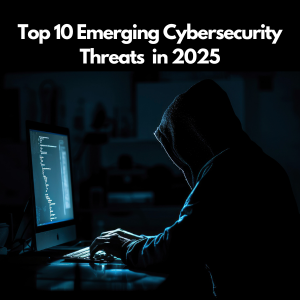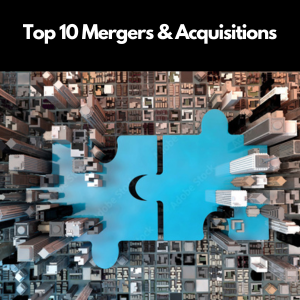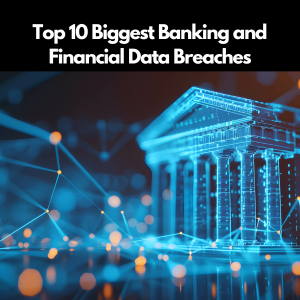This is the new cybersecurity reality: deepfakes, AI exploits, and geopolitical cyber brinkmanship. In 2025, attackers will be faster, AI-powered, and more persistent, while defenders struggle with a global cybersecurity talent shortage and an ever-expanding attack surface.
The following top 10 emerging cyber threats offer a forward-looking analysis of what’s next—from weaponized AI to critical infrastructure vulnerabilities—based on real incidents, expert predictions, and evolving tactics shaping the year ahead.
- AI: From Defense Tool to Attack Surface
Many forward-thinking organizations have embraced AI aggressively, with 66% of cybersecurity leaders calling it the biggest game-changer in defense capabilities, according to the World Economic Forum’s Global Cybersecurity Outlook 2025. But, only 37% have governance processes to assess AI risks before deployment.
This reckless adoption has backfired. In 2024 alone, several breaches—most notably incidents tied to AI-powered fraud detection tools—occurred not because companies lacked cybersecurity but because the AI tools themselves were exploited. Attackers poisoned training data, manipulated decision models, and turned defensive AI into an operational blind spot. AI is not just a defensive asset anymore but an expanding attack surface.
- Geopolitical Cyber Brinkmanship
2024 was a year where cyber conflict moved from shadows to center stage – and it will most likely escalate in 2025. Nearly 60% of companies say geopolitical tensions shape their cybersecurity strategies.
Following cyber campaigns linked to Chinese state-sponsored actors targeting critical infrastructure (Microsoft, 2024). and ransomware gangs aligned with Russian interests targeting Western healthcare and logistics, corporate risk teams increasingly treat cybersecurity as geopolitical risk management.
- Talent Shortage: The Hidden Crisis
The cybersecurity talent gap grew another 8% in 2024, with the global shortfall now exceeding 4 million professionals (ISC2, 2024). It is so much more than merely a recruitment challenge — it is an existential operational risk.
In sectors like healthcare, logistics, and municipal services, unfilled cyber roles are directly linked to slower incident response times and increased breach impact. Automation can only fill part of the gap; human oversight is irreplaceable.
- Critical Infrastructure at Risk
Cyber-physical systems are the soft underbelly of the economy.
In 2024, ransomware gangs breached water treatment plants, energy grids, and healthcare systems—not just for profit but to demonstrate destructive capability. This raises fears that pre-positioned malware could trigger large-scale kinetic failures in future conflicts. Legacy operational systems (some 20+ years old) are now networked—exposing industrial control systems to internet-borne threats.
- Infostealer Malware
Infostealer malware campaigns have taken on a new level of sophistication, particularly in their ability to target high-value government and defense-related accounts. In February 2025, hundreds of stolen credentials associated with US Department of Defense (DoD) agencies and contractors were discovered for sale on underground forums (Infosecurity, 2025).
Such hackers often operate quietly, embedded in everyday applications or delivered via innocuous-looking phishing links. Once executed, they extract login data, session tokens, and other sensitive information, packaging it for bulk resale or direct exploitation. The defense sector has become a prime target, as compromising even a single contractor account can provide adversaries with a foothold into highly classified networks or weapons systems.
- IoT Data Breaches: The Expanding Attack Surface
The Mars Hydro breach, which exposed 2.7 billion records, is a major red flag showcasing the structural vulnerability of the IoT ecosystem (Moxso, 2025). Sensitive data—ranging from device IDs and IP addresses to plaintext passwords—was left openly accessible due to a misconfigured, unprotected database. This breach is not an isolated incident but part of a broader pattern where IoT data security consistently lags behind deployment speed.
Unfortunately, the risks extend far beyond individual devices. Compromised IoT ecosystems allow attackers to pivot laterally, using weakly secured devices to gain footholds into corporate networks, critical infrastructure, or industrial control systems.
- Deepfakes
Deepfake technology has evolved from a political propaganda tool into a scalable cybercrime service. In 2025, deepfake videos circulating on social media are expected to exceed 8 million, driven by low-cost deepfake-as-a-service tools requiring no technical skill (University of Florida, 2024).
But the fundamental shift is the proliferation of corporate deepfake attacks. In 2024, a Hong Kong finance employee transferred $25 million after a video call featuring deepfaked versions of their own C-suite, including the CFO, who instructed the transaction (CNN, 2024). For a long time, deepfakes were mostly fake celebrity clips— but recently, they have become precision-engineered tools for BEC (Business Email Compromise) 2.0, where voice, video, and documents can all be convincingly faked at once.
- DDoS Attacks
DDoS in 2025 is a hybrid threat—part economic sabotage, part cyber smoke screen, and part political retaliation, making intent as dangerous as impact. In essence, DDoS attacks flood a target’s servers, networks, or applications with malicious traffic, making services unavailable to legitimate users.
But newer tactics combine multiple methods at once, forcing defenders to fight on several fronts: DDoS attacks now use carpet bombing, flooding entire IP ranges at once, making defence harder by spreading the blast across the infrastructure. Combined with amplification—where attackers hijack exposed DNS, NTP, or SNMP servers to multiply traffic volume by up to 70x—these attacks cripple services fast. In 2024, pro-Russian hackers hit Finnish banks during NATO tensions, mixing amplification floods with encrypted traffic to overwhelm both public sites and backend systems (Yle, 2024).
- Regulatory Inconsistencies
Cybersecurity laws are tightening everywhere—from the EU’s NIS2 Directive to China’s stricter data export rules and AI governance proposals across the US, UK, and Asia. But without harmonization, this fragmented regulatory patchwork creates compliance chaos for global companies. Instead of focusing on actual risk reduction, security teams are increasingly forced to chase compliance checkboxes across conflicting frameworks, stretching resources thin. The imbalance weakens real defense, leaving organizations vulnerable despite being "compliant."
At the 2024 WEF Cybersecurity Summit, global security leaders called for coordinated governance to close these gaps—especially for emerging tech like GenAI, where inconsistent rules could slow innovation without improving security (WEF, 2024).
- Cloud Security
Cloud security is riddled with risks, from data breaches and misconfigurations to API vulnerabilities and insider threats. Weak identity controls, poor encryption, and unpatched systems expose sensitive assets, while shadow IT, compliance failures, and insecure third-party integrations create blind spots.
DDoS attacks, account hijacking, and persistent threats exploit gaps in multi-cloud environments, where complexity fuels oversight. In one of the most high-profile cloud security incidents in 2024, Chinese state-backed attackers (Storm-0558) exploited a flaw in Microsoft’s cloud authentication system. By forging authentication tokens, they gained unauthorized access to sensitive US government email accounts, including those of senior officials in the State Department and Commerce Department (Microsoft, 2024).
Bottom Line
Cyber defenders are still playing by rules attackers abandoned years ago. Organizations have spent the past decade investing in tools, but the threats ahead demand systemic thinking. Security is not a departmental responsibility… it is a critical strategic capability woven into governance, supply chains, risk modelling, and even M&A due diligence. Every boardroom conversation about growth should include a cyber resilience audit, because the cost of missing even one entry point can now cascade across entire ecosystems.
.png?width=1816&height=566&name=brandmark-design%20(83).png)


